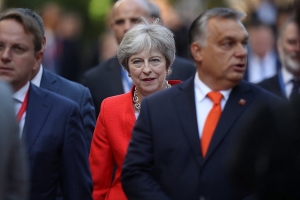Support migrant centric journalism today and donate

UK schools desperate to recruit teachers are hiring foreign educators on Tier 5 visas rather than Tier 2 visas, according to the anti-immigration Migration Advisory Committee (MAC). The government committee published its ‘Review of Teachers’ report recently and found that schools are turning to the short-term, Tier 5 visa to plug a chronic skills shortage.
It is easier for schools to employ young teachers on Tier 5 visa Youth Mobility Scheme visas. You do not need a Tier 2 Sponsorship licence. Because of the expense and inconvenience of applying for a Tier 2 visa it is not surprising that schools are instead employing teachers on tier 2 visas.
Following its review, the MAC called for computer science, Mandarin and general science teachers to be added to the government’s official Tier 2 Visa occupational shortage list, which consists of professions where there are not enough resident workers to fill job vacancies. Listed occupations face fewer recruitment restrictions when employing people from outside of the European Economic Area (EEA).
The MAC report stated that, in 2015, 887 teachers had been recruited by schools under Tier 2 visas – the main UK immigration route used to recruit non-EEA nationals. However, the report uncovered an increase in the use of Tier 5 visas.
One of the Tier 5 visa categories is the youth mobility scheme that allows graduates from certain countries, including Australia, Canada and New Zealand, to work in the UK for up to a maximum of two years. After this time they would probably have to come under the Tier 2 visa scheme or leave the Country.
UK Visas needed due to Teacher recruitment crisis
General secretary of the Association of Teachers and Lecturers, Mary Bousted, stated that the review’s findings ‘speak volumes about the growing teacher recruitment crisis.’ She went onto warn that the lack of teaching staff would have ‘huge implications’ on a school’s ability to perform to expected standards.
In an interview with Schools Week, Bousted said: “Schools are so desperate for teachers they are prepared to hire them on these short-term, Tier 5 visas even though it means there will be rapid turnover of staff. We know that successful schools have a relatively stable staffing structure while fragile schools have a much greater turnover.”
“This creates real problems for pupils in terms of continuity of their teaching, knowing who you are as a teacher and knowing how things are done in the school,” Bousted added.
According to data compiled by the Office for National Statistics, 42,000 Tier 5 entry-clearance visas were issued in the UK in 2016. However, the Home Office does not gather job title information for these migrants, which means it’s not possible to track how many of them are teachers.
Recruitment agencies say teachers on Tier 5 visas may exceed Teachers on Tier 2 Visas
At least 30 recruitment agencies that placed teachers had information suggesting that the number of UK migrant educators holding a Tier 5 visa could potentially exceed the number entering Britain on Tier 2 visas.
Increasingly restrictive Tier 2 immigration rules have made it very difficult for schools to hire non-EEA teachers that are not on the shortage occupation list. The main reason for this is that UK teaching salary bands do not meet the minimum income threshold that qualifies foreign workers for a Tier 2 visa.
Bousted said: “Teachers teaching outside their subject area is rising, one in five maths and English lessons are now taught by people with no more than a GCSE or equivalent in the subject. This is just yet another symptom of the malaise that is affecting schools where school leaders cannot find enough teachers.”
As previously reported by Workpermit.com, Prime Minister Theresa May commissioned the MAC, back in May 2016, to assess whether there is a shortage of primary and secondary school teachers in general or only teachers in certain specific subject areas. MAC was also asked whether it would be ‘sensible’ to fill teaching vacancies with non-EU migrants on Tier 2 visas.
At the time the review was commissioned, Darryl Mydat Managing Director of TLTP Education (The London Teaching Pool)stated that ‘most teaching salaries would fall well below the required band, raising concerns that teacher shortages will worsen. With only maths, chemistry and physics teachers exempt from the threshold, teaching shortages across other subject areas could increase.’
A report published by the National Audit Office (NAO) in February 2016 found that a lack of teachers across highly-specialised subject areas meant that students were often being taught by ‘non-specialists.’ According to the NAO, 28 percent of secondary school physics classes were being taught by teachers holding qualifications no higher than 'A' level in the subject.
NAO scrutinises public spending on behalf of Parliament, holding the government to account for the way in which money is spent by central government departments, government agencies and non-departmental public bodies. They found that 54 percent of headteachers working in schools primarily made up of disadvantaged children found it difficult to attract and keep good teachers, compared to 33 percent of other schools.





















